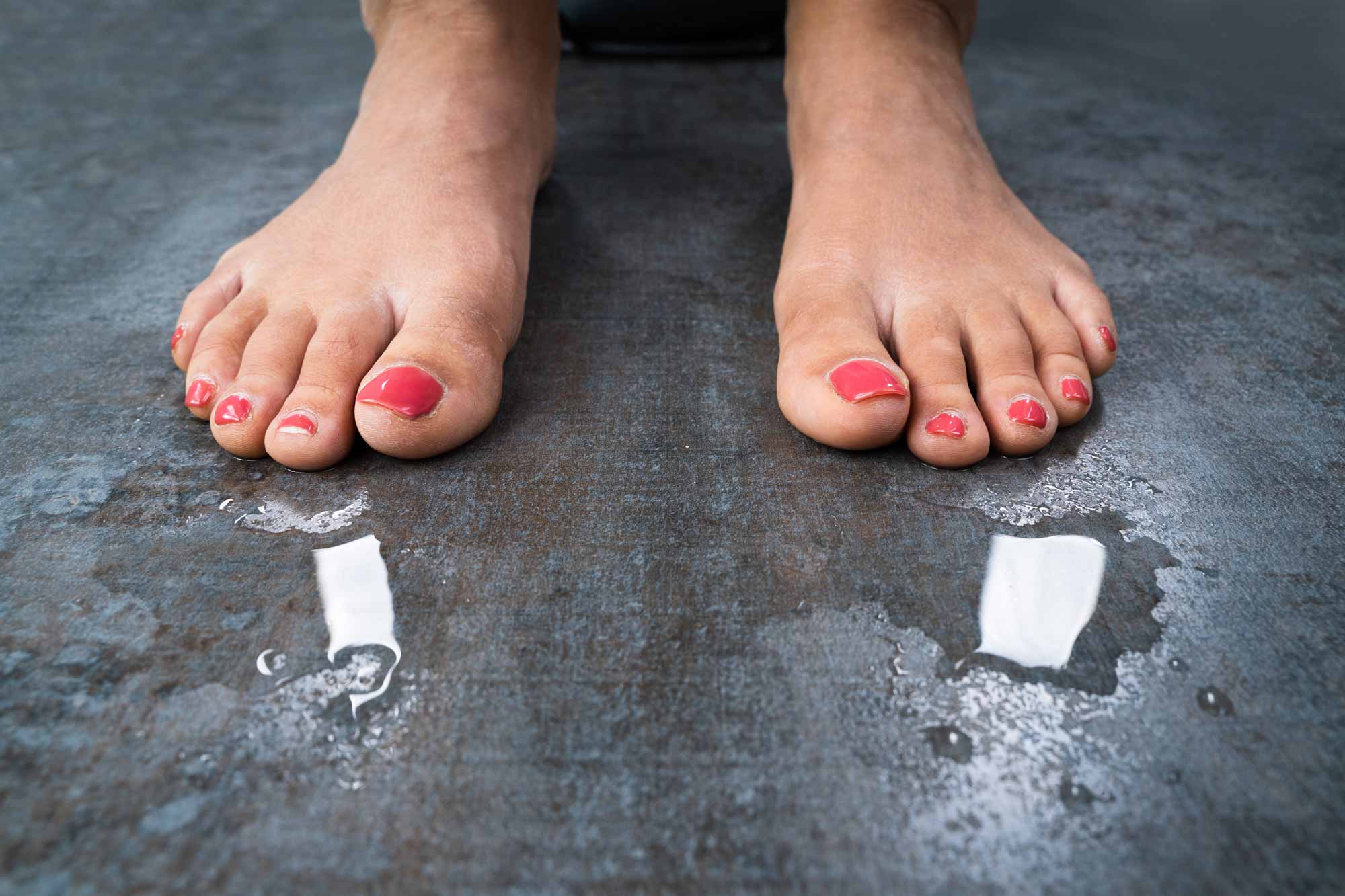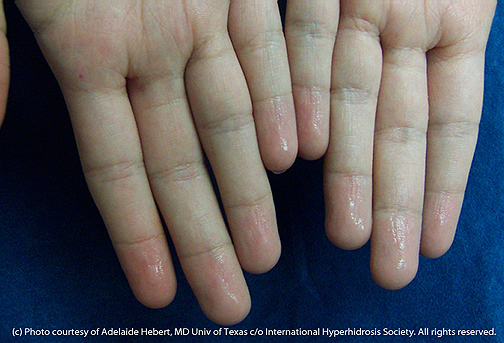Leading Dermatology Treatments for Hyperhydrosis of Hands and Feet: What You Need to Know
Leading Dermatology Treatments for Hyperhydrosis of Hands and Feet: What You Need to Know
Blog Article
Introducing the Intricacies of Excessive Sweating: A Comprehensive Guide to Diagnosis and Monitoring
Excessive sweating, medically called hyperhidrosis, is a condition that affects a substantial variety of individuals and can have a profound influence on their lifestyle. While sweating is a natural bodily function, its overactivity in hyperhidrosis offers an unique set of difficulties that usually exceed simple pain. Recognizing the underlying reasons, recognizing the symptoms, and navigating the diagnostic procedure for hyperhidrosis can be detailed jobs. In this comprehensive guide, we will explore the complexities of hyperhidrosis, from its diagnosis to the range of therapy choices readily available, losing light on reliable administration strategies for those grappling with this condition.

Comprehending Hyperhidrosis Causes
Hyperhidrosis triggers can be connected to numerous factors such as genes, hormonal discrepancies, and particular medical problems. Genetics play a significant function in main focal hyperhidrosis, where people acquire the problem from their household participants. By determining the particular aspects adding to extreme sweating, healthcare carriers can customize therapy plans to resolve the underlying reason, supplying alleviation and enhancing the quality of life for people influenced by hyperhidrosis.
Recognizing Hyperhidrosis Manifestations

Additionally, hyperhidrosis signs might materialize in psychological and social distress, as individuals may feel ashamed or anxious concerning their sweating, causing evasion of social situations (Exessive Sweating). Furthermore, duplicated episodes of extreme sweating can lead to skin maceration, fungal infections, and an overall decrease in self-worth
Diagnostic Process for Hyperhidrosis
Starting the analysis process for too much sweating entails extensive examination of the person's clinical background and health examination. Making inquiries concerning the start, period, and causes of sweating episodes is vital to set apart between key focal hyperhidrosis and second generalised hyperhidrosis. Case history ought to also include inquiries about medications, clinical problems, and family history of hyperhidrosis.
Throughout the physical exam, particular focus is paid to the areas affected by sweating. The health care provider might assess the extent of sweating, look for indicators of underlying problems, and evaluate the influence of sweating on the individual's quality of life. Furthermore, certain tests like the gravimetric examination, starch-iodine examination, or skin conductance dimensions may be conducted to evaluate the amount of sweat produced.
Additionally, in situations where second hyperhidrosis is thought, extra tests such as blood tests, pee examinations, and imaging studies may be suggested to identify the underlying root cause of too much sweating. The analysis procedure aims to precisely determine the type and reason of hyperhidrosis to lead ideal administration approaches.
Therapy Options for Hyperhidrosis
When addressing excessive sweating, various therapy alternatives are readily available to reduce signs and symptoms and improve the person's lifestyle. The therapy approach for hyperhidrosis depends upon the seriousness of signs and the person's feedback to initial treatments.
Topical therapies, such as aluminum-based antiperspirants, are often suggested as the first line of defense for taking care of light cases of hyperhidrosis. For people with a lot more serious signs, oral drugs like anticholinergics may be recommended to help decrease sweating.

Effective Monitoring Methods
To properly manage hyperhidrosis, a extensive and individualized therapy plan customized to the client's certain demands and feedback to previous treatments is crucial. This strategy may incorporate a combination of restorative techniques, including way of life adjustments, topical therapies, dental medications, botulinum toxic substance injections, iontophoresis, and in extreme situations, surgical treatments like sweat gland removal or sympathectomy. Way of life modifications such as using moisture-wicking clothes, utilizing antiperspirants, and practicing stress-reducing strategies can page enhance clinical interventions. Topical antiperspirants containing aluminum chloride are frequently the first-line treatment, with stronger formulations available for resistant cases. Oral drugs like anticholinergics might be prescribed for generalized hyperhidrosis. Botulinum toxic substance shots work for focal hyperhidrosis, giving temporary More about the author relief by obstructing the release of acetylcholine. Iontophoresis, including the usage of a low electric current to decrease sweat gland activity, can be advantageous for both palmoplantar and axillary hyperhidrosis. Surgical options are generally booked for extreme, refractory situations and need careful consideration of advantages and threats. A multidisciplinary approach involving skin specialists, medical care physicians, and, if needed, surgeons, can enhance the administration of hyperhidrosis.
Conclusion
To conclude, hyperhidrosis is a condition defined by too much sweating, which can greatly affect an individual's quality of life. By recognizing the reasons, identifying the signs and symptoms, and going through the diagnostic process, health care service providers can successfully manage this problem. Treatment choices include topical medicines, dental drugs, shots, and even medical treatments in serious situations. With appropriate diagnosis and monitoring techniques, people suffering from hyperhidrosis can discover relief and enhance their overall well-being.
Excessive sweating, medically understood as hyperhidrosis, is a condition that influences a substantial number of people and can have an extensive influence on their high quality of life. By recognizing the specific aspects adding to too much sweating, medical care service providers can customize treatment strategies to resolve the underlying reason, using relief and enhancing the high quality of life for people impacted by hyperhidrosis.
Hyperhidrosis, defined by extreme sweating past what is needed for regulating body temperature level, can considerably impact a person's quality of life. Asking concerning the beginning, period, and sets off of sweating episodes is important to separate in between their website key focal hyperhidrosis and secondary generalised hyperhidrosis. Treatment for hyperhydrosis of hands and feet.In final thought, hyperhidrosis is a condition identified by excessive sweating, which can significantly influence a person's high quality of life
Report this page